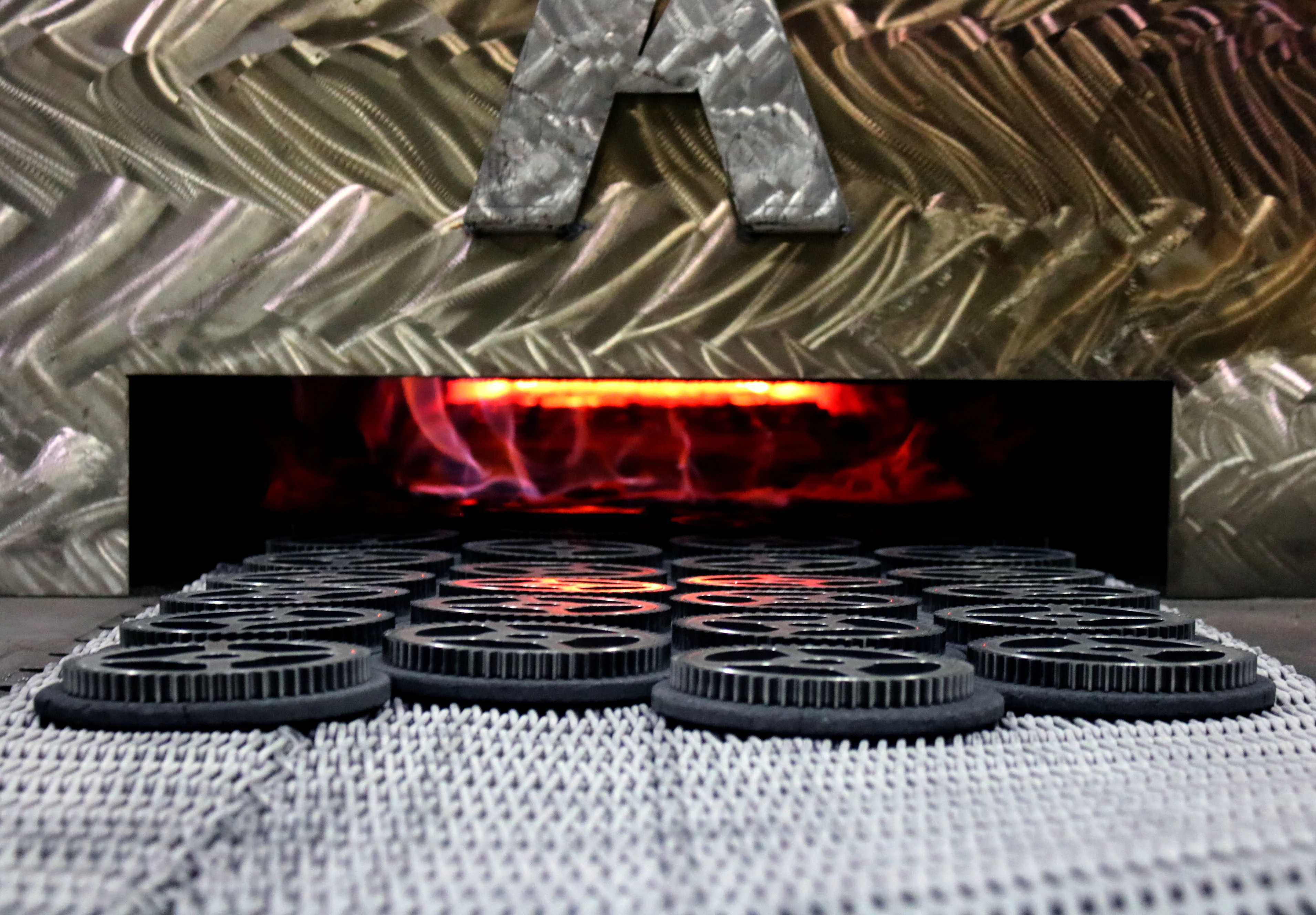
Powder Metallurgy Sintering vs. Metal Injection Molding Sintering: An In-Depth Comparison
No matter the manufacturing method, sintering follows a fundamental process. Heat is applied to the material until it’s nearly at melting point. Then, the individual metal powder particles metallurgically bond together to achieve the material’s desired properties. However, there are a few key differences when it comes to powder metallurgy and metal injection molding.
In this blog, we’ll compare powder metallurgy sintering vs. metal injection molding sintering.
What is Sintering?
Sintering involves heating the powder near its melting point so the particles can create a permanent bond between them. After sintering, you’re left with a solid part.
In both metal injection molding and powder metallurgy, the sintering process follows the same concept – heat the part until its individual particles bond together to achieve the desired material properties.
Sintering in PM vs. Sintering in MIM
While the sintering process has similar steps, the details differ between MIM and traditional PM. There are four main differences when it comes to powder metallurgy sintering vs. metal injection molding sintering.
- Batch furnaces vs. continuous furnaces
- Time spent in the sintering process
- Part size
- Quantity
1. Batch Furnaces vs. Continuous Furnaces
While parts can be sintered in batch or continuous furnaces, metal injection molded parts are commonly processed through batch furnaces. Traditional powder metallurgy parts, on the other hand, are typically sintered in continuous furnaces.
Batch Furnaces
These are industrial furnaces where the material is loaded on trays into the sintering furnace, processed, and unloaded after the processing cycle. In other words, the furnace processes one “batch” of material at a time.
Once the heating and cooling cycle is completed, the furnace is emptied before the next load of material is introduced. This allows for greater flexibility because each batch can be subjected to different temperature and time profiles.
Continuous Furnaces
Unlike batch furnaces, continuous furnaces are designed to keep processing material without interruption. The material is loaded on one end, moves through the furnace (often on a conveyor system), undergoes the desired treatment, and is then discharged at the other end. This operation continues consistently without the necessity to stop and start between batches.
Continuous furnaces are typically more energy efficient because they stay at a consistent operating temperature without the need to heat up and cool down repeatedly. However, they offer less flexibility as all materials must undergo the same heat treatment.
2. Time Spent in the Sintering Process
Although sintering in metal injection molding typically uses batch furnaces with many parts at once, it tends to be a long process taking up to twenty-four hours per batch.
On the other hand, parts sintered in a continuous furnace may take up to 3 hours to get through the furnace, but there is a steady stream of parts going in one end and coming out the other, making it a much higher volume process compared to batch furnaces.
3. Part Size & Quantity
Metal injection molding produces intricate parts typically under 160 grams, which is relatively small compared to other manufacturing processes.
If you’re looking to create heavier components (up to 4 kilograms), powder metallurgy may be a better solution.
4. Quantity
As mentioned above, multiple MIM parts are placed on trays that enter the sintering furnace. Since they’re typically smaller in size, many can be sintered in one batch, but the quantity is limited to the number of trays that will fit in the furnace.
On the other hand, when sintering conventional powder metallurgy parts on a continuously moving conveyor belt and the throughput is typically limited by how much weight the furnace can process per hour.
Sintering Shrinkage in Metal Injection Molding: Planning Ahead
In metal injection molding, the feedstock (what forms the component) consists of metal powder and binders. During the sintering process, these binders evaporate, resulting in the shrinkage of the final part by 16-22%.
You’ll need to take the shrinkage into consideration during the tool design and compound a feedstock with the appropriate mold scale factor (MSF). Due to the binder loading, additional material will need to be procured.
Although this can cause an additional up-front cost, your part will have a higher sintered density and, likewise, superior mechanical properties in the metal injection molding process.
Finding the Best Process for You
If you’re looking for a way to produce complex yet intricate parts, metal injection molding may be the way to go. However, if you’re looking for larger parts, powder metallurgy might suit you better.
Finding the best process for your components can be difficult. Connecting with industry experts is essential to make the best decision.

